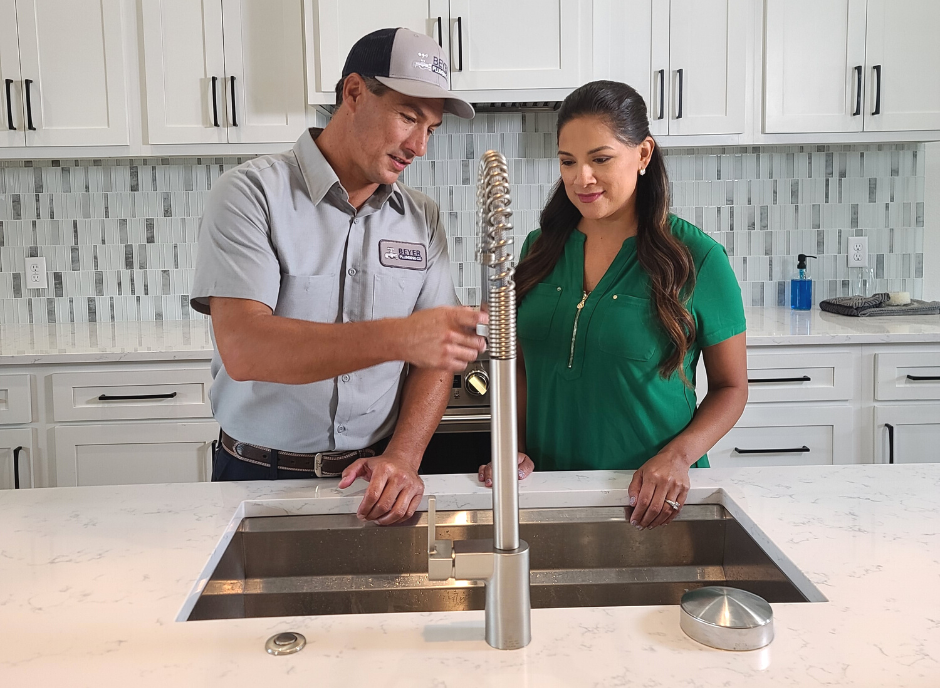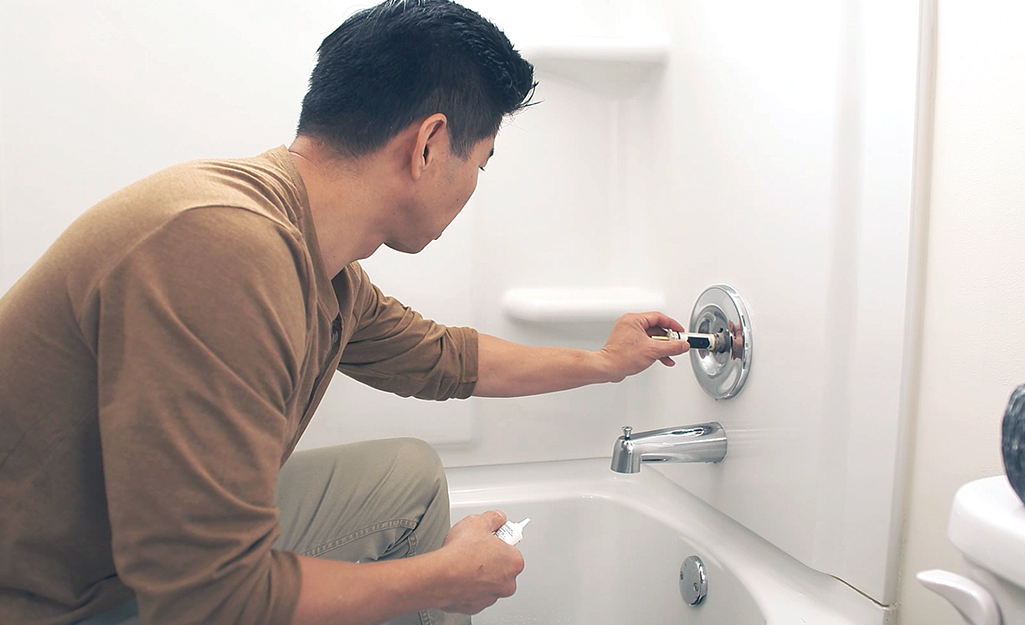Motives Why It's Essential to Repair a Faulty Faucet
Motives Why It's Essential to Repair a Faulty Faucet
Blog Article
They are making a few good points relating to 4 Common Reasons for a Leaky Faucet overall in this content below.

Dripping faucets might seem like a minor inconvenience, but their influence surpasses simply the nuisance of the noise. From wasting water to incurring unneeded monetary costs and health threats, neglecting a leaking faucet can bring about different consequences. In this write-up, we'll explore why it's essential to resolve this typical home problem immediately and properly.
Wastage of Water
Environmental Effect
Leaking taps contribute substantially to water wastefulness. According to the Epa (EPA), a single tap leaking at one drip per second can lose greater than 3,000 gallons of water annually. This not only stress water resources but likewise influences communities and wildlife dependent on them.
Financial Expenses
Boosted Water Costs
Past the ecological influence, trickling taps can blow up water costs substantially. The accumulated wastage over time converts right into greater utility expenses, which could have been stayed clear of with prompt repair services.
Prospective Building Damages
Additionally, prolonged leaking can result in harm to fixtures and surfaces bordering the faucet. Water buildup can trigger discoloration, rust, and also structural concerns if left unattended, leading to additional repair service costs.
Health and wellness Issues
Mold And Mildew and Mildew Growth
The consistent presence of wetness from a leaking tap develops an optimal setting for mold and mildew growth. These fungis not just endanger interior air quality but additionally pose health and wellness dangers, especially for people with respiratory system problems or allergic reactions.
Waterborne Illness
Stagnant water in leaking faucets can end up being a breeding ground for bacteria and other pathogens, increasing the danger of waterborne conditions. Impurities such as Legionella germs prosper in stationary water, possibly leading to significant ailments when ingested or inhaled.
DIY vs. Specialist Repair service
Benefits and drawbacks of DIY Fixing
While some may try to take care of a dripping tap themselves, do it yourself repair services come with their own set of obstacles. Without appropriate expertise and tools, DIY efforts can exacerbate the problem or bring about incomplete repair work, lengthening the trouble.
Advantages of Working With a Professional Plumber
Employing an expert plumber makes certain that the underlying cause of the dripping faucet is dealt with successfully. Plumbing professionals have the proficiency and equipment to detect and fix faucet problems effectively, saving time and reducing the risk of further damages.
Step-by-Step Overview to Repairing a Dripping Faucet
Tools Required
Prior to trying to repair a dripping tap, gather the necessary devices, including a flexible wrench, screwdrivers, replacement components (such as washers or cartridges), and plumber's tape.
Usual Faucet Issues and Their Solutions
Recognize the type of tap and the particular concern causing the drip. Usual problems consist of damaged washing machines, rusty shutoff seats, or defective O-rings. Describe manufacturer instructions or on the internet tutorials for step-by-step assistance on repair services.
Preventive Measures
Normal Upkeep Tips
To prevent dripping taps, carry out routine upkeep such as cleansing aerators, evaluating for leaks, and replacing worn-out components quickly. Furthermore, take into consideration mounting water-saving tools or updating to more efficient fixtures.
Importance of Prompt Repairs
Dealing with dripping taps as quickly as they're observed stops additional water wastage and possible damages, ultimately conserving both water and cash in the long run.
Impact on Home Value
Assumption of Well-Maintained Home
Maintaining a property in good condition, consisting of addressing upkeep concerns like leaking taps, enhances its viewed value and worth among prospective customers or tenants.
Influence on Resale Value
Properties with well-kept plumbing components, consisting of taps, command greater resale worths in the real estate market. Resolving dripping faucets can contribute to a positive impression during home inspections and settlements.
Ecological Responsibility
Private Payment to Conservation
Taking duty for taking care of leaking taps lines up with broader efforts towards water preservation and environmental sustainability. Every person's actions jointly make a significant effect on maintaining priceless sources.
Sustainable Living Practices
By prioritizing prompt repairs and adopting water-saving behaviors, individuals add to sustainable living practices that profit both present and future generations.
Conclusion
Dealing with a trickling faucet surpasses mere comfort; it's a necessary action toward saving water, reducing monetary prices, and safeguarding health and wellness and building. Whether through DIY fixings or specialist assistance, acting to take care of trickling taps is a tiny yet impactful means to advertise responsible stewardship of sources and contribute to a much healthier, a lot more lasting future.
Most Common Reasons for a Leaky Faucet and How to Stop the Drip
Whether it’s your kitchen faucet leaking or a bathroom faucet leaking, one leaky faucet can waste anywhere from three to 30 gallons of water every single day. If the constant drip-drip-drip doesn’t get your attention, your water bill will. The good news is that, by following a few simple steps, chances are pretty good you can fix the problem yourself.
Why is it dripping?
Before you start taking things apart, let’s break down some of the most common causes of a leaky faucet.
Bad O-ring.
A cartridge is a valve that controls the flow of water into the faucet spout. On cartridge faucets there’s an O-ring—the little disc attached to the stem screw that holds the faucet handle in place. If it’s loose or worn-out, it can cause your sink handle to leak. Of course, the cartridge itself could be worn out. If that’s the case, make sure you replace it with the exact same kind.
Corroded valve seat.
The valve seat connects the faucet and the spout. If the leak seems to be coming from the spout, it might be because a buildup of water sediment has corroded the valve seat.
Worn-out washers or seals.
A leaky spout could be caused by a bad washer that rests against the valve seat. It’s just a matter of time before friction takes its toll. It could also be the wrong size washer or one that’s been installed incorrectly. Water sediments can also corrode inlet and outlet seals.
Water pressure.
If the faucet only drips now and then, or when you turn the handles a certain way, you should probably check your home’s water pressure.
Loose or broken parts.
The adjusting ring and packing nuts in the stream screw can become loose over time, causing your sink handle to leak. Try tightening or replacing the packing nut. If the leak is coming from the pipes underneath the sink, you probably have a broken pipe or fitting. If that’s the case, you should definitely call a plumber.
Know your faucet.
Faucets come in a variety of types. Each one has its own assembly—and its own possible causes of leaks. Learning about the four most common kinds of faucets will help you know how to take them apart and make any repairs.
How to stop a leaky faucet
Fixing that leaky faucet doesn’t have to take a lot of time, money, or expertise. It’s usually a simple matter of replacing a worn-out washer or gasket, a loose O ring, or another part. Chances are really good you can do this yourself if you follow these simple steps.
Shut off the water.
Before you tackle the faucet, cut off the water supply to the sink. There should be one valve for hot and one for cold. Hand-turn them clockwise with your hands till they close. If there are no valves under the sink, head to the basement and shut off the main water supply to the house. Then turn on the faucet until it empties out the water that’s still in the line and you’re ready to start. It’s a good idea to cover the sink drain with a plug or a rag so you don’t lose any small pieces and parts while you’re working.

I'm just very occupied with Why Are My Faucets Dripping (And Can I Fix It Myself)? and I hope you liked our entry. Sharing is good. Helping others is fun. Bless you for being here. Revisit us soon.
Report this page